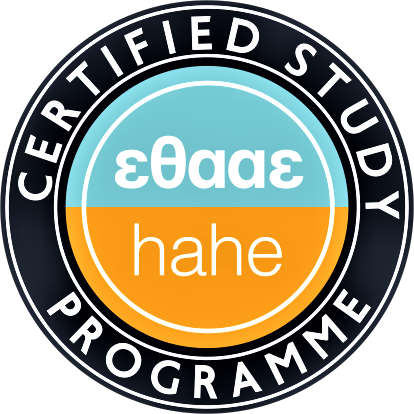Econometric Applications
TYPE OF COURSE: Compulsory for Specialization “International economics and finance"
NUMBER OF CREDITS: 6 ECTS credits
EXPECTED LEARNING OUTCOMES
The course is an introduction to practical problems in applied econometrics. The approach taken is highly practical, emphasizing the problems one faces when trying to evaluate models in practice. This requires a good knowledge of econometric theory, as it is essential to have a good idea of what the computer does when asked to estimate a model. Each module will start with a presentation of the basic results that are relevant to us (rather than the proofs) before moving on to the data, along with a presentation of the basic economic problem/question we are trying to understand using data (i.e. what the economic question is, which is not always clear). The analysis of the issues will be done using actual data from Greece or other sources (e.g. USA).
The aim of the course is to familiarize students with the basic methodological tools of modern empirical analysis, providing a comprehensive knowledge. Upon completion of the course, students who successfully pass the course will be able to:
a. Understand and analyse the fundamental problems associated with the empirical analysis of economic issues.
b. Understand the use of econometric theory in real economic problems using computers and specialized software.
c. Understand the concept of causality and how the causal effect of a variable can be calculated through experimentation.
d. Understand the basic tools for identifying and estimating causal relationships.
e. Be able to collect data appropriate for empirical research and estimate empirical models.
f. Have developed a set of analytical and technical tools and will be able apply them to estimate and interpret empirical results from microeconomics and macroeconomics.
g. Will be able to estimate discrete choice models and use them for classification.
h. Be able to use models that combine time series with a stratified dimension (panel data) to estimate causal relationships.
i. Be able to use the method of instrumental variables to estimate causal relationships.
j. Be able to estimate models with time series and use them for forecasting and estimating dynamic relationships.
PREREQUISITES: ECONOMETRICS I (4117), ECONOMETRICS II (4114)
COURSE CONTENT
- Problems in Regression Models and Causal Relationships
- Experiments, Quasi-Experiments and Causal Results Effects
- Models with Stratified and Panel data (Differences-in-Differences estimation)
- Estimation with instrumental variables/two least-squares method (IV/2SLS)
- Discrete choice models and classification (binary dependent variables)
- Limited Dependent Variables and Count Dependent Variables
- Truncated Regressions and Sample Selection Problems
- Models with Time Series: Estimating Dynamic Causal Effects
RECOMMENDED READING
- Econometric Theory, William H. Greene, (2022) Broken Hill Publishers LTD,1st Greek Edition
- Introductory Econometrics. A Modern Approach. J.M. Wooldridge (2022), Papazisis, 2nd Greek edition
- Introduction to Econometrics, Stock, James H.; Watson, Mark W. 4th edition PEARSON, 2019
- Introduction to Econometrics: A Modern Approach, Wooldridge, Jeffrey M., 7th edition, CENGAGE
- Applied Econometrics with R, Kleiber, C., Zeileis, A., SPRINGER, 2008
- Mastering Metrics: The Path from Cause to Effect, Angrist, J. D. and Pischke, J.-S., PRINCETON UNIVERSITY PRESS, 2014
- Mostly Harmless Econometrics: An Empiricist's companion, Angrist, J. D. and Pischke, J.-S., PRINCETON UNIVERSITY PRESS, 2009
- Econometric Analysis, Greene, William H., 8th edition, PEARSON 2018
TEACHING METHODS: Lectures and tutorials at the Computing Lab
ASSESSMENT METHODS: : Projects and Final written exams
LANGUAGE OF INSTRUCTION: Greek – English terminology





 Patision 76
Patision 76 2108203 106 / 2108203 107
2108203 106 / 2108203 107 
